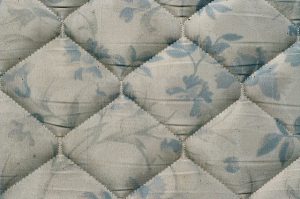Skin may be an exposure route to flame retardants while sleeping in bed
 Photo credit: spDuchamp
Photo credit: spDuchamp
A recent study published in the scientific journal Chemosphere has found that the amount and type of flame retardants that people are exposed to through dust may differ based on location within the home. The study examined dust from different locations inside the home to assess how the type and amount of flame retardants differed from location to location. Dust was collected from bedrooms and offices. In bedrooms, dust was collected from air conditioner filters, bed sheets, floors, and windows. In offices, dust was collected from air conditioner filters, printer and computer tables, floors and windows. In bedrooms, researchers found that air conditioner filters and bed sheets had the highest levels of flame retardants. In offices, printer table dust had the highest levels of flame retardants. This study shows that exposures to fame retardant chemicals can vary based on dust location, and highlights the potential risk for exposure via the skin, especially through dust in bed sheets. “More human exposure pathways other than dust ingestion should be considered, such as the dermal contact with beddings and furniture,” the authors concluded.


